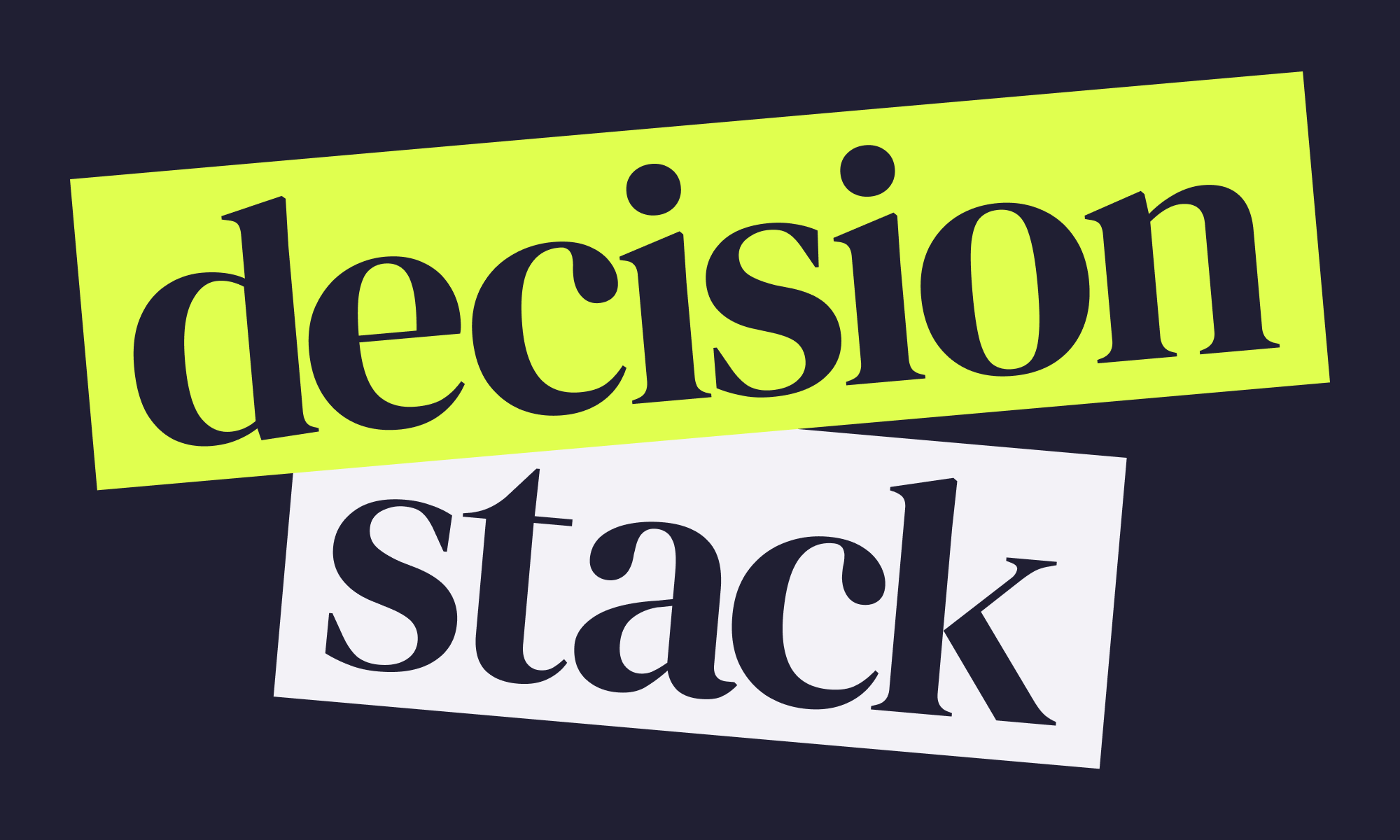Petra Wille: How I Use the Decision Stack in Product Leadership Coaching Sessions
Petra Wille shares real-world examples of how the Decision Stack has proven to be an invaluable tool, providing clarity and direction to product organizations.
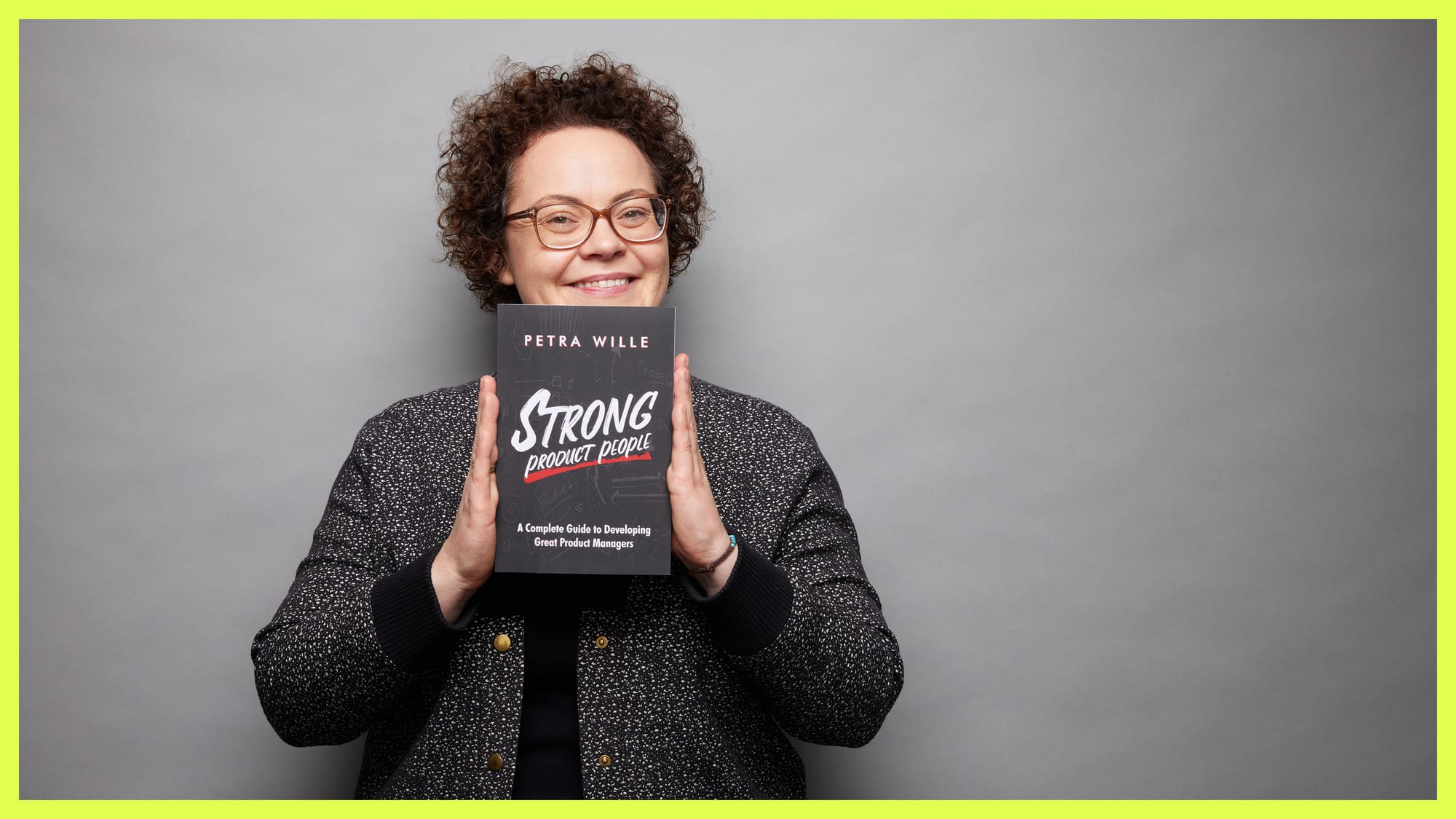
If you find yourself struggling to make effective decisions in your role as a product leader, or if you're having difficulty coming up with a cohesive product strategy, you're not alone. Perhaps your direct reports are constantly turning to you for guidance and direction, unsure of which path to take?
Sound familiar? If so, you may benefit from leveraging the Decision Stack - I've seen firsthand how powerful and effective this framework can be in helping product leaders and their teams make smarter, more informed decisions.
In this blog post, I will discuss some real-world examples of how the Decision Stack has proven to be an invaluable tool, providing clarity and direction to product organizations.
Use Case #1: Connecting the Dots
Have you ever wondered if your team members (or other employees outside your team) fully understood what they are currently working on and why? If they understand how their work contributes to the current strategy?
If I start to work with a coachee and lack of alignment, or lack of clarity on direction is a topic they want to dive into, I often use the Decision Stack as an interview guide for a first conversation. Together we check if the relevant artifacts to provide directional clarity (vision, strategy, goals) exist and if the employees are able to describe how all of these are connected. Plus—and this is the most important part—if all the decisions teams and individuals make are in line with these things.
In most cases, we find two common scenarios: Either some artifacts are missing or they’ve been poorly communicated or linked so storytelling around those artifacts is nonexistent or inaccurate. In the case where the artifacts don’t exist, the first action item is to create them. And in the cases where they’ve been poorly communicated or linked, we’ll focus on coming up with a compelling way to talk about the current strategy and goals.
The Decision Stack is the perfect visualization to facilitate this assessment. Just by drawing in the current company, the stack has often done magic. Questions like: “How is our company strategy different from our product strategy?” and “Do we need a portfolio strategy layer sitting on top of all the product strategies?” are vital discussions that bring clarity of thought for product leads who can then provide directional clarity to their teams.
The following image shows an example stack for a company with two distinct product lines and how these things are connected to the overall company strategy.
A quick example of how to use the “how” and “why” questions in coaching situations:
- If you see the backlog or roadmap of the team, ask “Why are these things important?” and the answer should be: “Because research indicates that these things help us drive our current goals.”
- If you get presented with the strategy for one of your product teams, ask “How do you make sure you are delivering towards this strategy? How do you measure success and progress?” The answer should be: “We’ll be measuring this by connecting the things we do to these goals over here.”
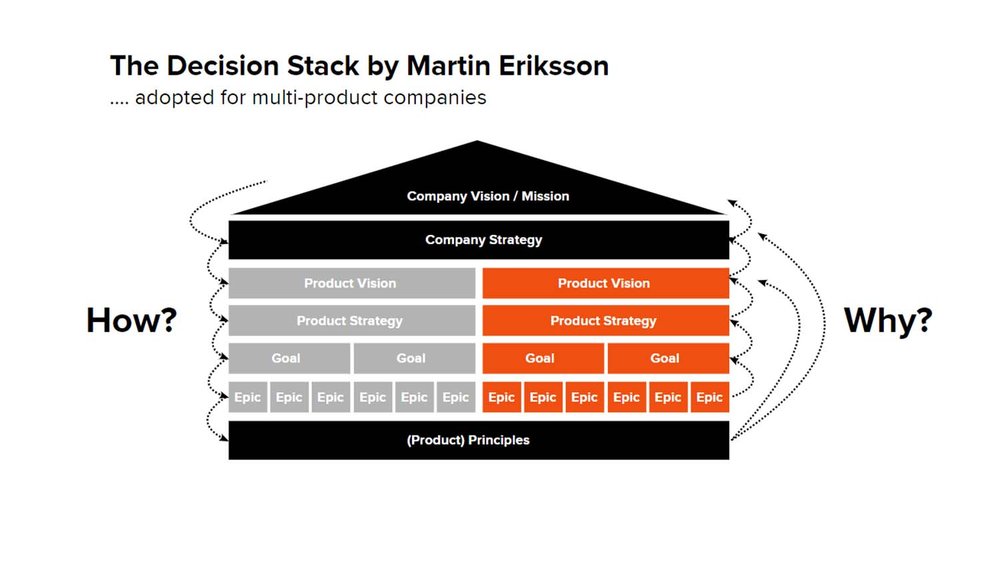
Use Case #2: Creating Alignment by Using Shared Goals
Conflict in teams often arises from conflicting goals. So for us leaders to set our teams up for success, we want to make sure that there is no such thing as conflicting goals. Or even better—that there are goals that more than one team is working towards (BTW, if you are using OKRs the right way, that’s exactly what you want to achieve). This is because shared goals create alignment, reduce friction, and minimize conflict between teams, which leads to increased productivity—something we all want!
Using a drawing of your company’s decision stack might help foster the discussion around shared goals. The picture below is just a random example of what that could look like.
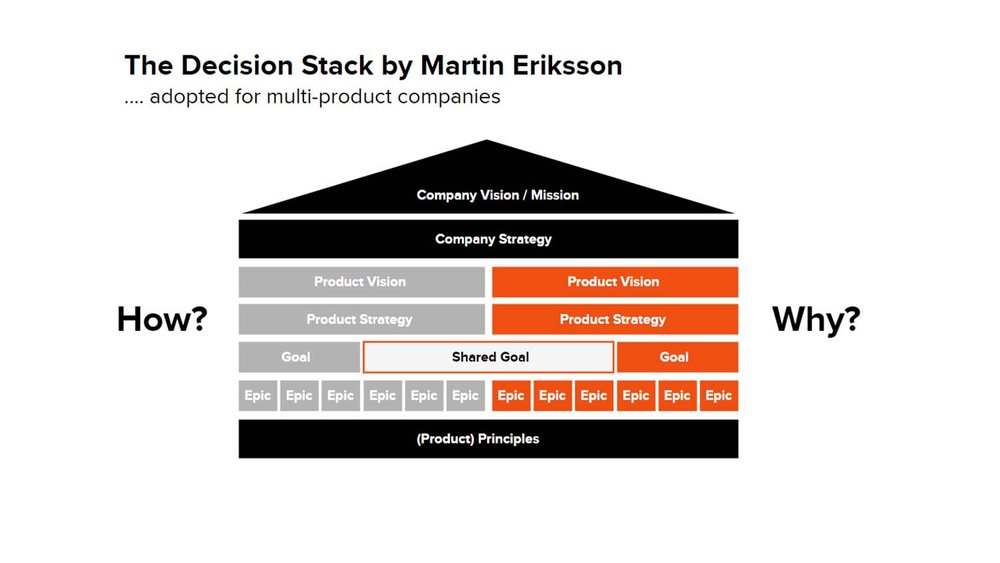
Use Case #3: Talking About Team Topologies & Mandate
I can’t count the number of times I’ve had to explain the difference between feature teams and empowered teams! So many companies think they are running “fully empowered teams” but never checked back on any of the definitions or made the effort to wrap their head around the differences.
And, depending on the situation, I use different ways to make sure my coachees are able to understand these differences. One model I like to use is John Cutler’s Mandate Levels or, no surprise, the Decision Stack. I find it helpful to discuss the realm of influence one product team has: Are they solely responsible for creating their product’s strategy (derived from the company strategy for sure!) or is that something the Head of Product is working on?
The next three pictures illustrate different types of influence. (Click to enlarge)
#1 - A fully empowered team that is setting everything from the product vision all the way down to opportunity selection (AKA the epics).
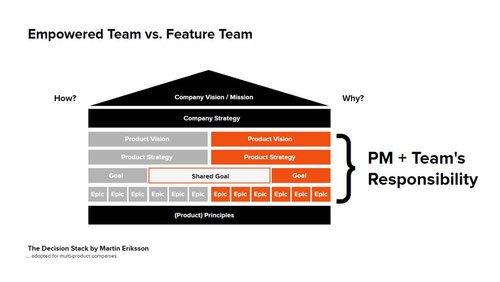
#2 - The extreme opposite. A feature team that gets told what to build. And let’s face it, in many feature team organizations, it’s even worse than that. The rest of the stack is not even visible to the teams in most of these companies or doesn’t even exist. There basically is NO strategy and “stuff to work on” is picked by “who is screaming the loudest” or the HiPPO’s opinions. So the connection between a team’s work to goals or even strategy is usually not clear or even hidden from the team in the ivory tower of upper management.

#3 - A version that I often see being used in startups. The Head of Product is the one mainly working on the product strategy and the teams derive meaningful goals from there.
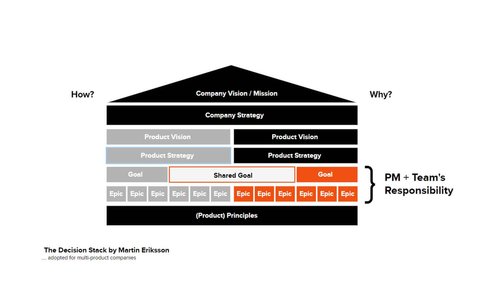
In any of these cases, a frank conversation about team empowerment and mandate is another great use case for the stack. Ask your teams to color code a stack. By coloring the levels they think they have ownership on is often a real eye-opener for product leads.
Another thing a product lead could be doing is using the stack in conversations about “splitting teams.” The easy rule is: If you can’t draw it on a whiteboard, chances are high that a split feels weird or artificial for your teams.
Summary
I hope this post gives some ideas to product leads on how to use the Decision Stack as a mental model in all sorts of conversations. The stack is a really powerful coaching tool.
It is a framework that helps you to discuss things like:
- How to achieve alignment and directional clarity across the board. Use the Stack to connect the dots. Ask why things are the way they are and how the organization is planning to reach their goals.
- Use it to discuss goals and where shared goals would be possible.
- Use it to discuss team topologies, team empowerment, and mandate.
And chances are high that you might find more use cases for the stack. If that’s the case, I would love to hear from you.
This gives you an idea of the types of conversations you can have in product leadership coaching sessions with Petra Wille. Sound good? Get in touch to learn more about how you might work together!
